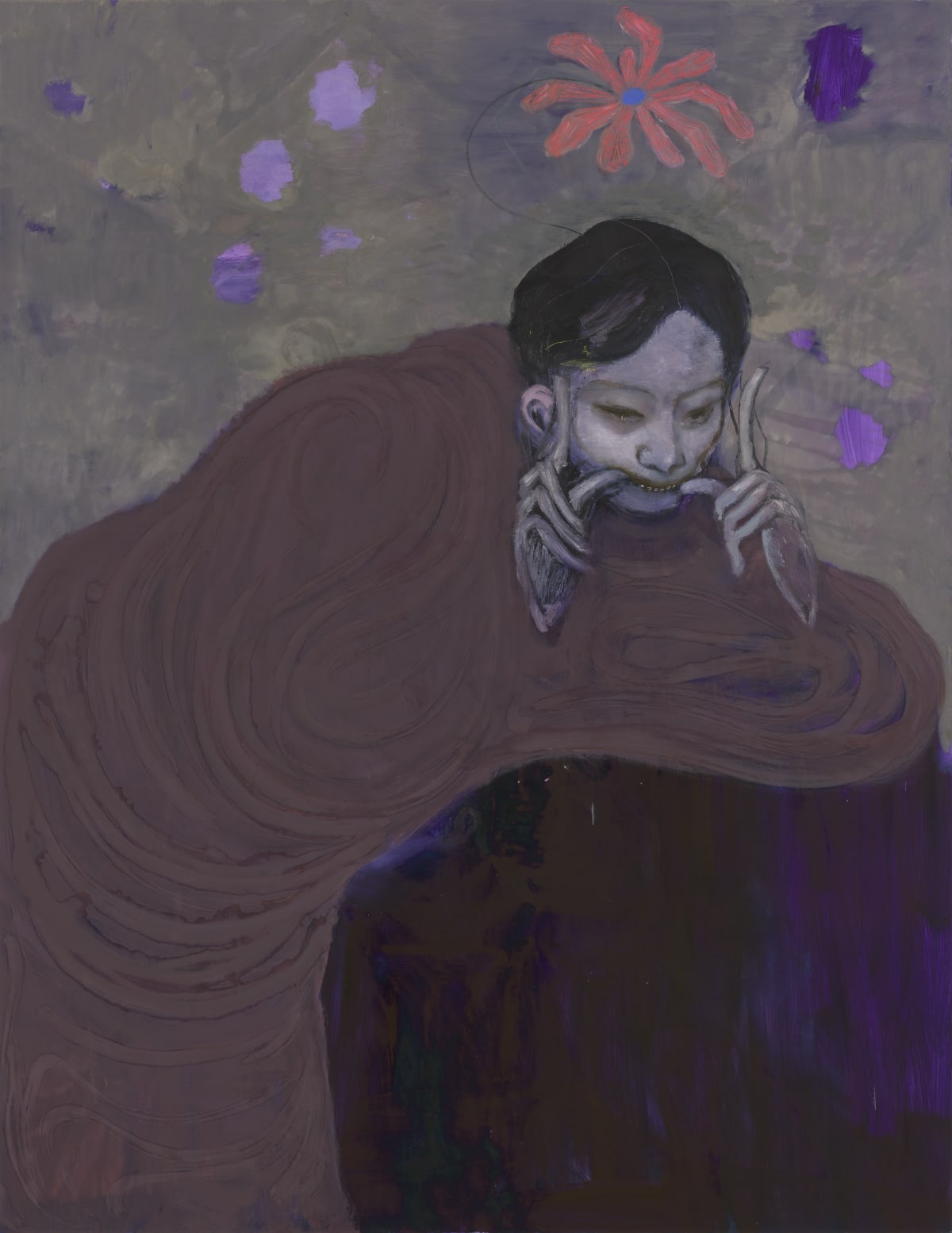Sanya Kantarovsky
Sanya Kantarovsky, born in 1982 in Moscow, Russia, is a New York-based artist renowned for his multifaceted practice centered on painting, with explorations in sculpture, animation, printmaking, and curatorial projects. Emigrating to the United States at age ten, Kantarovsky’s work reflects a synthesis of his Soviet upbringing and Western influences, drawing from art historical traditions, Soviet political cartoons, and children’s book illustrations. His figurative paintings are characterized by sinewy, expressive figures set against surreal, abstract backdrops, infused with dark humor, existential angst, and nuanced satire. Kantarovsky’s subjects—often lovers, children, or strangers—grapple with psychological and physical discomfort, embodying themes of desire, vulnerability, and the human condition.
Kantarovsky’s iterative approach to painting involves layered processes of addition and erasure, employing varied techniques from impasto to delicate watercolor. His work engages with canonical artists like Marc Chagall and Henri Matisse, alongside lesser-known figures from Eastern European aesthetics, creating a dialogue between personal experience and universal narratives. His paintings evoke an uneasy inner monologue, testing the boundaries of the canvas and the body, while his use of color and line recalls the graphic finesse of caricature and propaganda.
Represented by prominent galleries such as Luhring Augustine, Modern Art, and Capitain Petzel, Kantarovsky has exhibited widely across Europe, North America, and Asia. His works are held in prestigious collections, including the Whitney Museum of American Art, Tate Modern, and the Hirshhorn Museum and Sculpture Garden. Kantarovsky’s monographs, No Joke (2016) and Selected Works 2010–2024 (2024), document his evolving practice, which continues to probe the intersections of comedy, pathos, and painterly craft.
Sanya Kantarovsky, born in 1982 in Moscow, Russia, is a New York-based artist renowned for his multifaceted practice centered on painting, with explorations in sculpture, animation, printmaking, and curatorial projects. Emigrating to the United States at age ten, Kantarovsky’s work reflects a synthesis of his Soviet upbringing and Western influences, drawing from art historical traditions, Soviet political cartoons, and children’s book illustrations. His figurative paintings are characterized by sinewy, expressive figures set against surreal, abstract backdrops, infused with dark humor, existential angst, and nuanced satire. Kantarovsky’s subjects—often lovers, children, or strangers—grapple with psychological and physical discomfort, embodying themes of desire, vulnerability, and the human condition.
Kantarovsky’s iterative approach to painting involves layered processes of addition and erasure, employing varied techniques from impasto to delicate watercolor. His work engages with canonical artists like Marc Chagall and Henri Matisse, alongside lesser-known figures from Eastern European aesthetics, creating a dialogue between personal experience and universal narratives. His paintings evoke an uneasy inner monologue, testing the boundaries of the canvas and the body, while his use of color and line recalls the graphic finesse of caricature and propaganda.
Represented by prominent galleries such as Luhring Augustine, Modern Art, and Capitain Petzel, Kantarovsky has exhibited widely across Europe, North America, and Asia. His works are held in prestigious collections, including the Whitney Museum of American Art, Tate Modern, and the Hirshhorn Museum and Sculpture Garden. Kantarovsky’s monographs, No Joke (2016) and Selected Works 2010–2024 (2024), document his evolving practice, which continues to probe the intersections of comedy, pathos, and painterly craft.
-
 Sanya KantarovskySecret Channels, 2023Oil on canvas87 x 67 in
Sanya KantarovskySecret Channels, 2023Oil on canvas87 x 67 in
221 x 170.2 cm -
 Sanya KantarovskyIndividual Organic Body, 2023Oil on linen16 x 12 in
Sanya KantarovskyIndividual Organic Body, 2023Oil on linen16 x 12 in
40.6 x 30.5 cm -
 Sanya KantarovskyGrowth X, 2023Oil and watercolor on canvas75 x 55 in
Sanya KantarovskyGrowth X, 2023Oil and watercolor on canvas75 x 55 in
190.5 x 139.7 cm -
 Sanya KantarovskyI am a Body Shop, 2023Oil on canvas87 x 67 in
Sanya KantarovskyI am a Body Shop, 2023Oil on canvas87 x 67 in
221 x 170.2 cm -
 Sanya KantarovskyBleeding Nature, 2023Oil on canvas75 x 55 in
Sanya KantarovskyBleeding Nature, 2023Oil on canvas75 x 55 in
190.5 x 139.7 cm -
 Sanya KantarovskyNo Longer a Dog, 2023Oil on canvas75 x 55 in
Sanya KantarovskyNo Longer a Dog, 2023Oil on canvas75 x 55 in
190.5 x 139.7 cm







